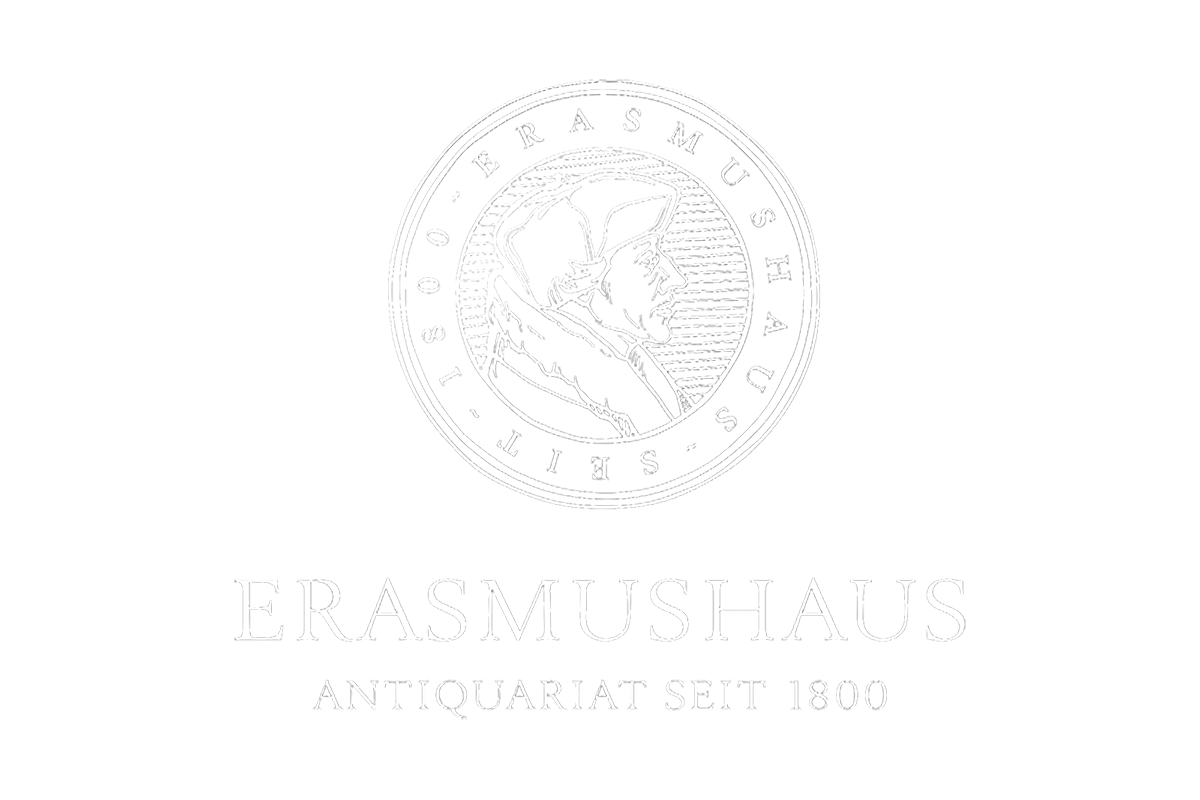BEARING OF THE CROSS. Rubbing print on vellum, coloured and heightened with gold. (108x84 mm). Vellum discoloured, tiny pinholes in the corners. Two faint traces of water droplets at the lower left corner. [Upper Germany, ca. 1440].
Sole copy known.
Devotional images originated in women's convents in the first half of the 14th century from the need to own such images personally, for example as a decorative insert in a prayer book. They were also distributed outside the monastery by itinerant preachers to support their sermons. Demand was soon so great that a lively trade developed. The images were initially painted by hand in small formats on parchment, paper or fabric. Typical motifs included the infant Jesus, the Passion of Christ, the Virgin Mary and Saints. They became widespread by the 15th century as simple rubbing prints or bread dough prints. Although produced in relatively large numbers, early devotional images are usually exceedingly rare today, as they were often very worn out and used up.
The image shows Christ advancing to the right with the cross on his left shoulder, which he holds with both hands. A bare-headed man is dragging him by a rope around his waist, while another man following the Saviour holds him by the waist with his right hand and is about to strike him with his left fist. Christ is dressed in the traditional blue robe, his head, arms and legs dripping with blood, the halo highlighted in gold and the cross painted in antique pink. The tormentor preceding him wears a pale yellow tunic and vermilion shoes, while the one behind him is clad in dark green; the ground is of the same colour. The incarnation of the three figures is dabbed with pink and their hair is coloured in yellow ochre. The whole scene is framed in vermillion.
According to Schreiber, the leaf was in the possession of the antiquarian bookseller Jacques Rosenthal in Munich in 1909, who dated it to around 1440 and assumed that it was produced in Upper Germany, respectively the area between the Danube and south of the Main.
Provenance: Jacques Rosenthal (1854-1937). – August Laube, catalogue, autumn 2012, item no. 1.
Reference: Schreiber 345b.

